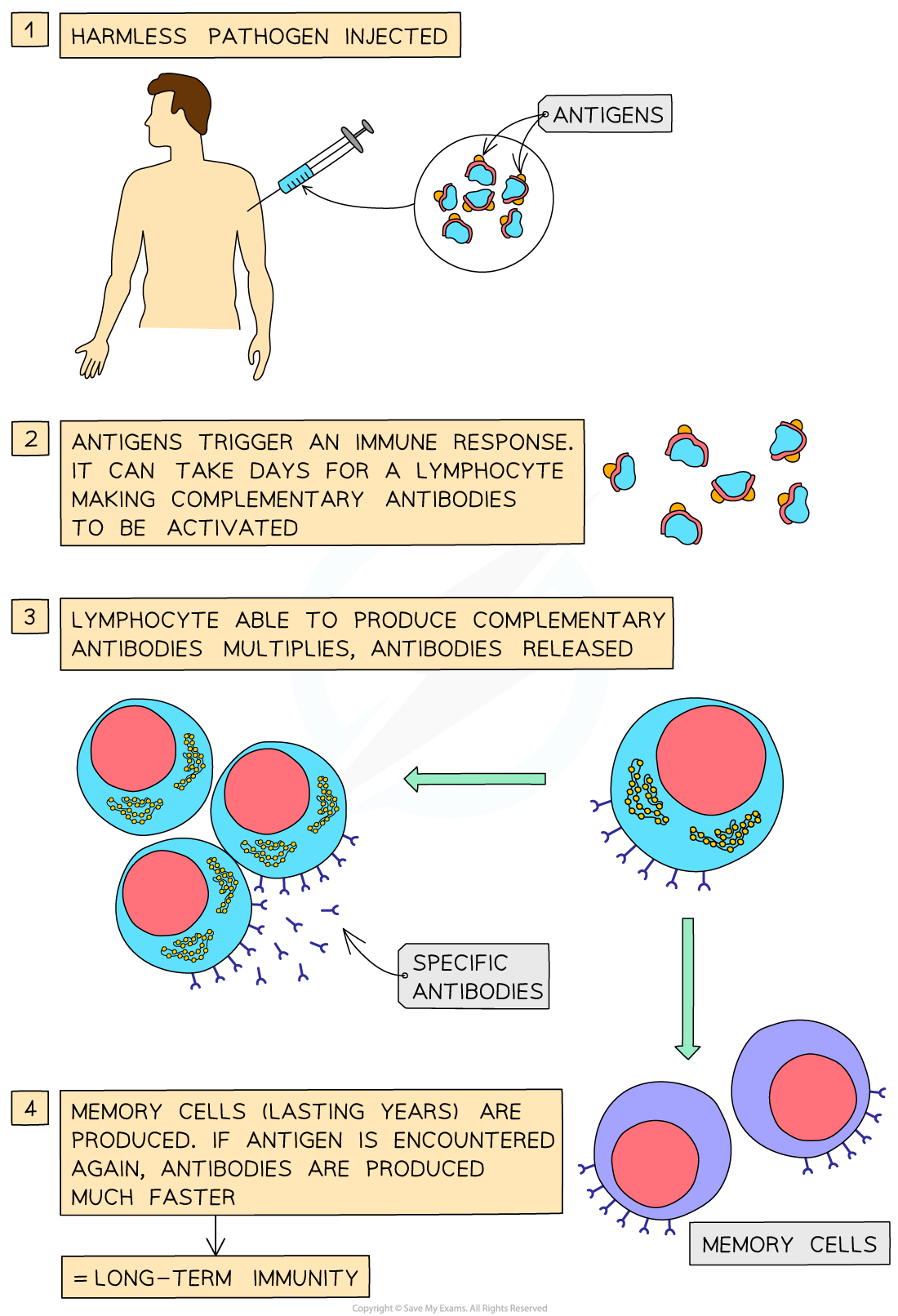How Vaccines Work (Cambridge (CIE) AS Biology): Revision Note
Exam code: 9700
How vaccines work
A vaccine is a suspension of antigens that are intentionally put into the body to induce artificial active immunity
A specific immune response where antibodies are released by plasma cells
There are two main types of vaccines:
Live attenuated
Inactivated
Vaccines are administered either by injection or orally (by mouth)
When a person is given a vaccine they have been given a vaccination (they are said to have been vaccinated)
The vaccinations given by injection can be into a vein or muscle
Vaccinations produce long-term immunity as they cause memory cells to be created
The immune system remembers the antigen when reencountered and produces antibodies to it, in what is a faster, stronger secondary response

Live attenuated vaccines
Live attenuated vaccines contain whole pathogens (e.g. bacteria and viruses) that have been ‘weakened’
These weakened pathogens multiply slowly allowing for the body to recognise the antigens
They trigger the primary immune response (plasma cells to produce antibodies)
These vaccines tend to produce a stronger and longer-lasting immune response
Inactivated vaccines
Inactivated vaccines contain whole pathogens that have been killed (‘whole killed’) or small parts (‘subunit’) of the pathogens (e.g. proteins or sugars or harmless forms of the toxins – toxoids)
As inactivated vaccines do not contain living pathogens they cannot cause disease, even for those with weak immune systems
However these vaccines do not trigger a strong or long-lasting immune response like the live attenuated vaccines
Repeated doses and / or booster doses are often required
Examiner Tips and Tricks
Remember vaccines trigger the primary immune response (T-helper cells trigger plasma cells to secrete specific antibodies), which leads to the production of memory cells. This will give a faster and greater response (a higher concentration of antibodies in a shorter period of time) during the secondary response.

Unlock more, it's free!
Did this page help you?